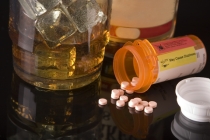 Each year, approximately 5,000 young people under the age of 21 die as a result of underage drinking; this includes about 1,900 deaths from motor vehicle crashes, 1,600 as a result of homicides, 300 from suicide, as well as hundreds from other injuries such as falls, burns, and drowning (National Institute on Alcohol Abuse and Alcoholism). These numbers are alarming, and service professionals should be diligent about ensuring that they are checking IDs and using their alcohol awareness training to avoid contributing to the problem.
Each year, approximately 5,000 young people under the age of 21 die as a result of underage drinking; this includes about 1,900 deaths from motor vehicle crashes, 1,600 as a result of homicides, 300 from suicide, as well as hundreds from other injuries such as falls, burns, and drowning (National Institute on Alcohol Abuse and Alcoholism). These numbers are alarming, and service professionals should be diligent about ensuring that they are checking IDs and using their alcohol awareness training to avoid contributing to the problem.
Some adults are comfortable allowing their teenagers to drink at home, the thought process often being, “if my teenager is going to imbibe, I’d rather they do it at home under my supervision, and I don’t have to worry about them getting behind the wheel of a car or harming themselves”. Teenage drinking is dangerous, regardless of where it occurs, or who is supervising. Teens can develop dangerous drinking habits, and supervising adults should be diligent about promoting alcohol awareness and age appropriate life choices. Additionally, teens are more likely to binge drink than their adult counterparts. According to the National Society on Drug Use and Health, 72% of 18- to 20-year-old drinkers reported heavy drinking in the past month. (NSDUH).
Also alarming, a new study led by researchers at Indiana University, and summarized by CNN, shows teen problem drinking is not a phase, and could be a predictor of alcohol dependence in adulthood.
It only takes a minute to check an ID and prevent a minor from entering a bar and buying a drink, but what about off-site sales and service? Gas stations, grocery stores and liquor stores are all places that teens turn to in order to purchase liquor, and staffers at those establishments should take steps to ensure they are doing all they can to prevent illegal sales.
Service professionals must be aware of the facts and dangers of teenage drinking. These service professionals are required to obtain alcohol awareness training, and will learn valuable real-world information for dealing with these types of situations in their TAM® training. Off-site premises workers don’t necessarily know that if they sell beer and liquor to a legal adult, the adult won’t provide that liquor to teenagers, but using your best judgment and following store procedures will help to keep things safe and legal.
The national campaign We Don’t Serve Teens makes excellent and common-sense suggestions for helping to curb teenage drinking from off-site sales, “Create and maintain sales and service policies that every staffer should follow.” (We Don’t Serve Teens). Everyone involved in sales should be aware of store policies regarding acceptable forms of ID, when and how to refuse a sale, etc.
Retailers and off-site sales professionals should be diligent about checking IDs as well to make sure teenagers are not trying to purchase liquor with fake or borrowed identification. To learn more about recognizing a fake or borrowed ID, refer to our blog post, “Are Minors Using Fake IDs and Sneaking Past You?” Most establishments also have a guidebook, like the I.D. Checking Guide, for validating various forms of identification. Ask your manager if you have a guide like this in your establishment and refer to it if needed. The I.D. Checking Guide can be purchased from TAM® here.
Taking steps to stop teen drinking is everyone’s job. Parents, teens, workers, communities and others all have to work to make a difference. For more ways to help curb teens’ access to alcohol, refer to We Don’t Serve Teens’ suggestions.
What are some tricks that you’ve seen used by fake ID holders? How else do you think service workers can help curb teen drinking?
Resources
- Underage Drinking – National Institute on Alcohol Abuse and Alcoholism
- Drinking in America: Myths, Realities, and Prevention Policy – National Society on Drug Use and Health
- Problem Teen Drinking is Not Just a Phase – CNN
- Alcohol Retailers Can Help Reduce Teen Drinking – We Don’t Serve Teens
- Stopping Teens’ Easy Access To Alcohol – We Don’t Serve Teens
© 2011 National Hospitality Institute®, TAM® of Nevada

 Servers, bartenders and anyone else responsible for service and sale of alcoholic beverages has a very important job on their hands… knowing how to spot an inebriated guest, and knowing when to intervene. As a server, it’s important to make sure that your guests and patrons are having an enjoyable time, are served exactly what they ordered, and remain respectful of the establishment and others. On top of all of this, it’s imperative to watch for any warning signs that they may be intoxicated. As such, a bartender or server should always be closely monitoring their guests.
Servers, bartenders and anyone else responsible for service and sale of alcoholic beverages has a very important job on their hands… knowing how to spot an inebriated guest, and knowing when to intervene. As a server, it’s important to make sure that your guests and patrons are having an enjoyable time, are served exactly what they ordered, and remain respectful of the establishment and others. On top of all of this, it’s imperative to watch for any warning signs that they may be intoxicated. As such, a bartender or server should always be closely monitoring their guests.

